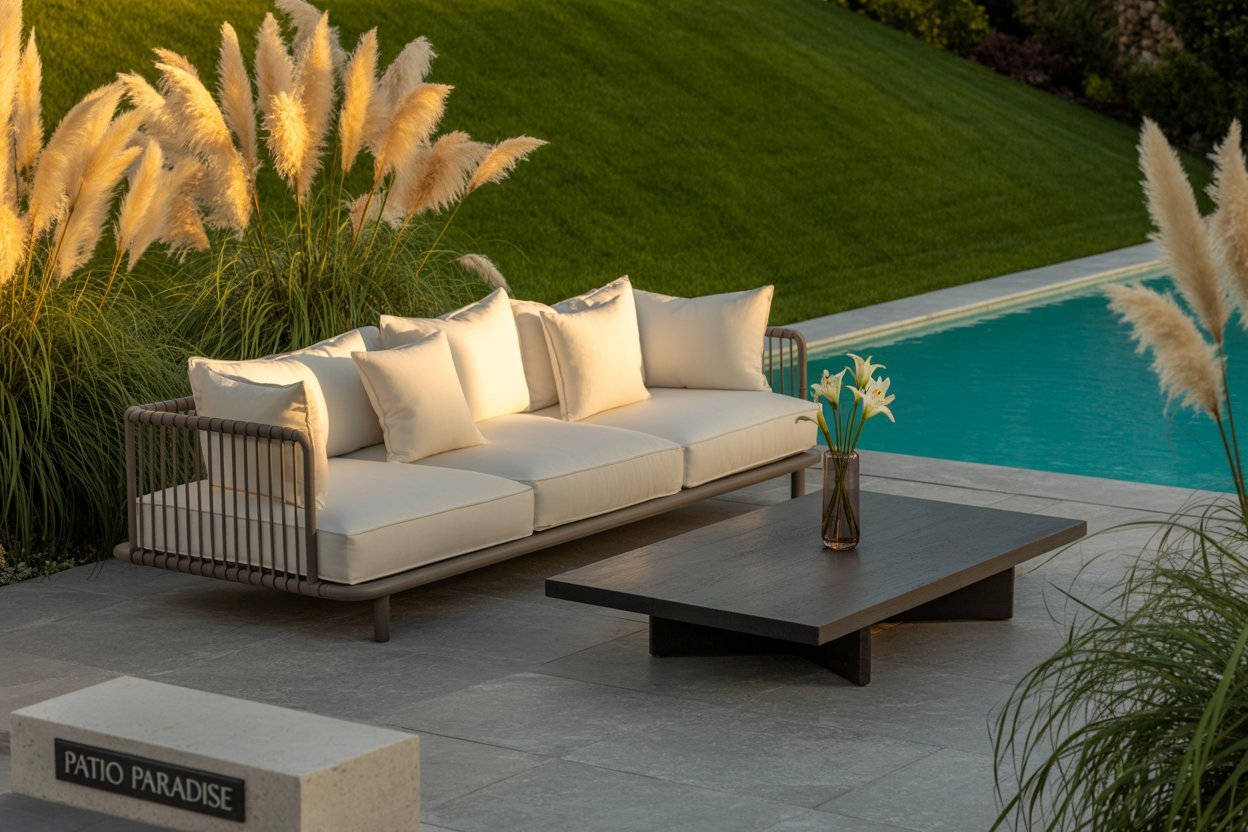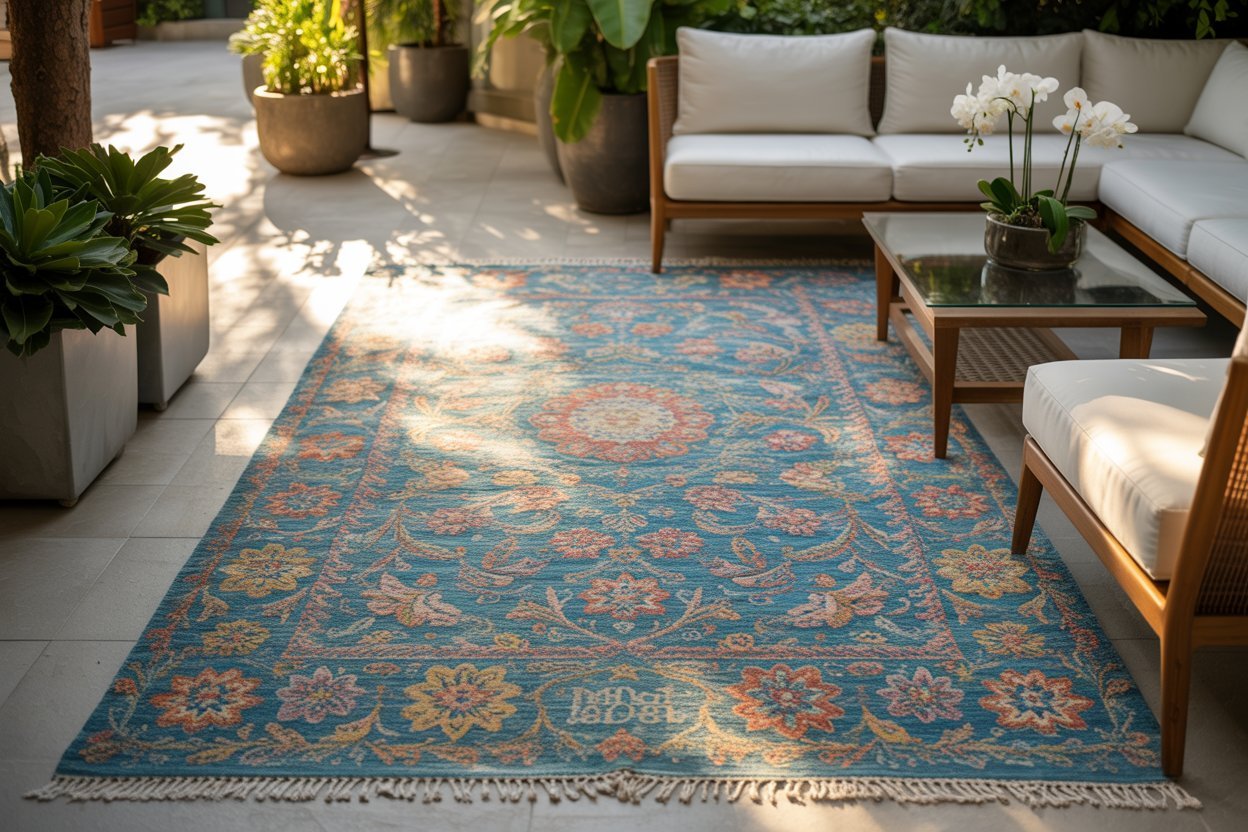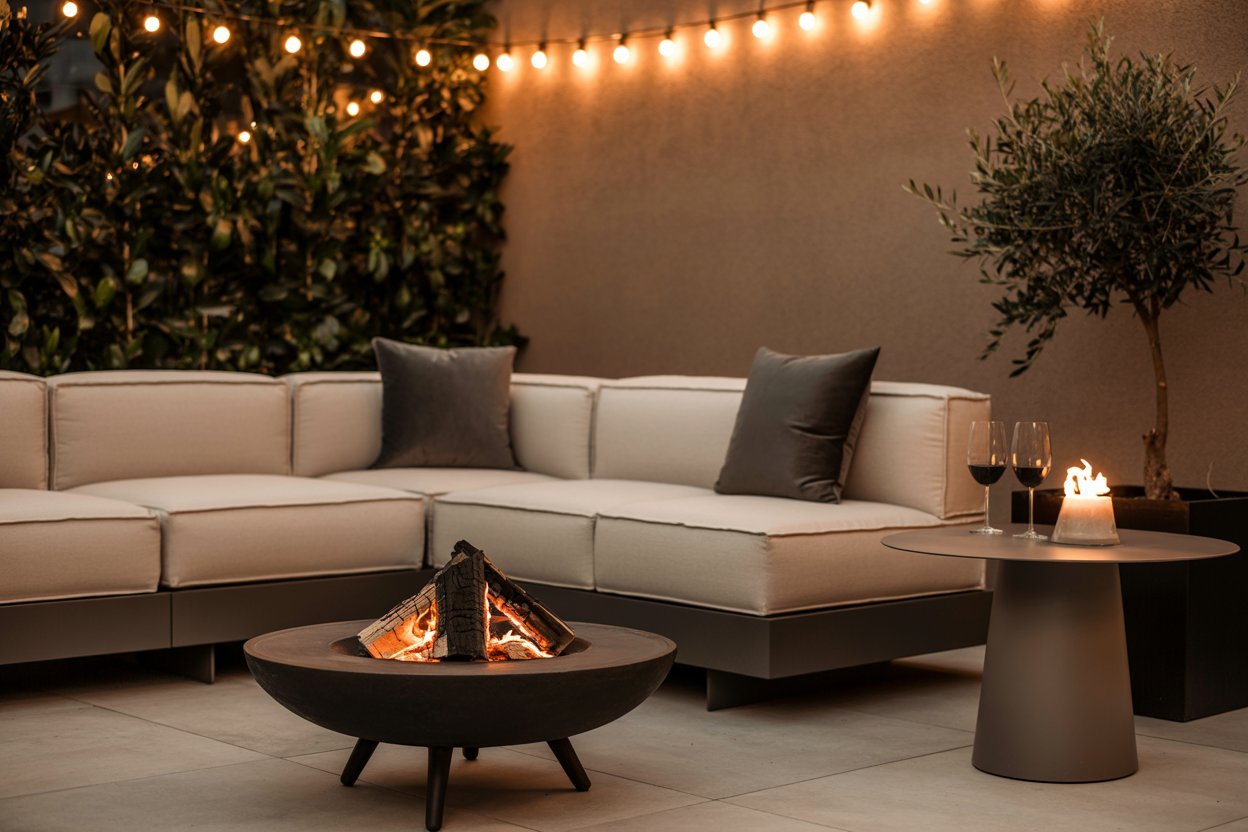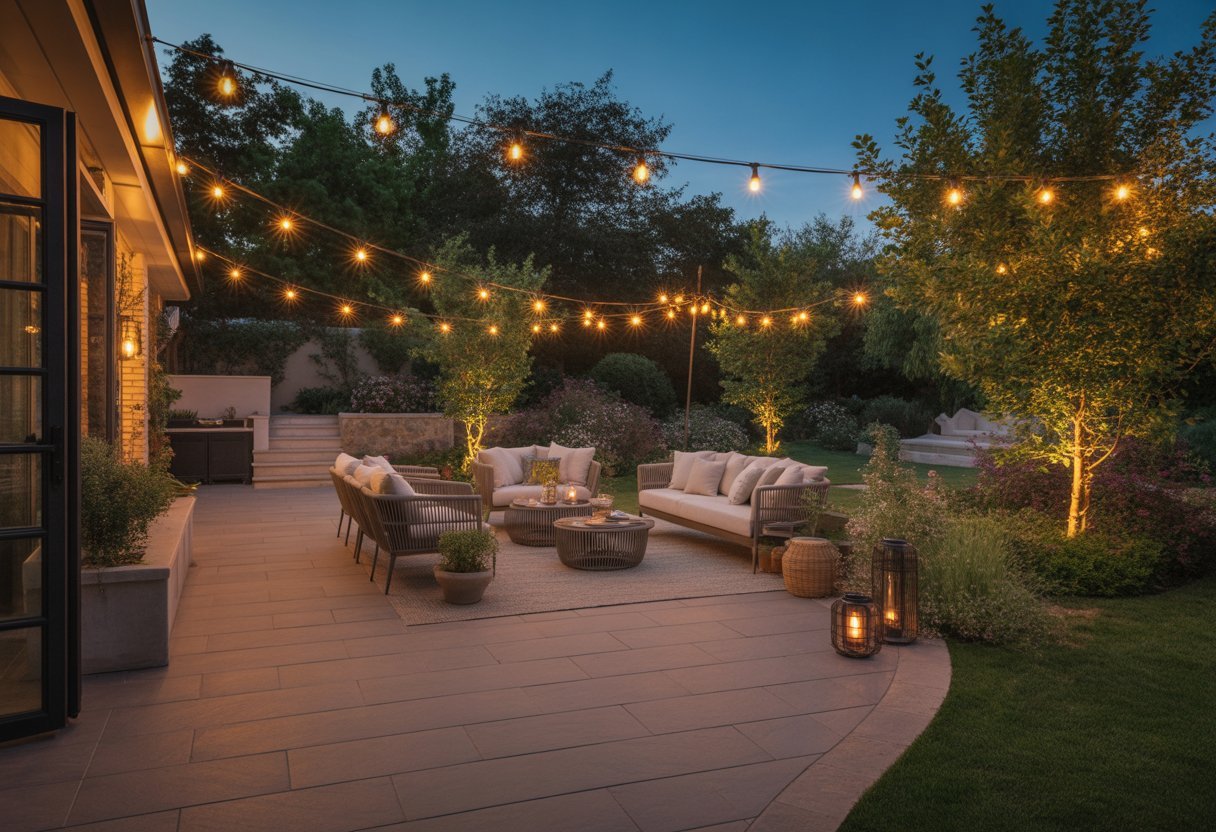
Instagram promised us picture-perfect patios that would make our neighbors swoon and our followers double-tap. But after a few seasons of living with these viral outdoor trends, design professionals are ready to swipe left on the whole aesthetic. What looked effortlessly chic in filtered photos has proven to be high-maintenance, uncomfortable, or downright impractical in real life.
The Bottom Line: These Instagram-famous patio trends might rack up likes online, but they’re creating headaches for homeowners and eye-rolls from design professionals. Skip the social media hype and invest in timeless outdoor design that works as well as it looks.
15. The Fluffy Neutral Invasion
Pampas grass swept Instagram and Pinterest like a golden tsunami, but designers are growing weary of this ubiquitous botanical star. While the feathery plumes initially offered an easy way to add texture and neutral color to outdoor spaces, their overwhelming popularity has created a cookie-cutter approach to patio styling. The same beige, wheat-toned stalks appear in virtually every outdoor entertaining post, reducing what was once a distinctive design choice to predictable social media shorthand for “sophisticated outdoor living.”
The practical problems with pampas grass extend beyond its overuse to genuine functionality and safety concerns. These dried stalks are essentially decorative kindling, creating fire hazards when placed near outdoor candles, fire pits, or grills—common elements in the patio spaces where they’re most frequently featured. Additionally, pampas grass is notoriously messy, shedding seeds and debris that require constant cleanup, undermining the low-maintenance appeal that initially made it attractive to Instagram-influenced homeowners.
Perhaps most concerning is how the pampas grass trend has discouraged more creative and site-appropriate plant choices. Instead of selecting plants that thrive in their specific climate and support local ecosystems, homeowners default to this imported ornamental that often escapes cultivation to become an invasive species. Professional landscapers increasingly advocate for native grasses and perennials that provide similar texture and movement while supporting biodiversity and requiring less maintenance than constantly replacing dried imported stems.
14. The Monochrome Mistake
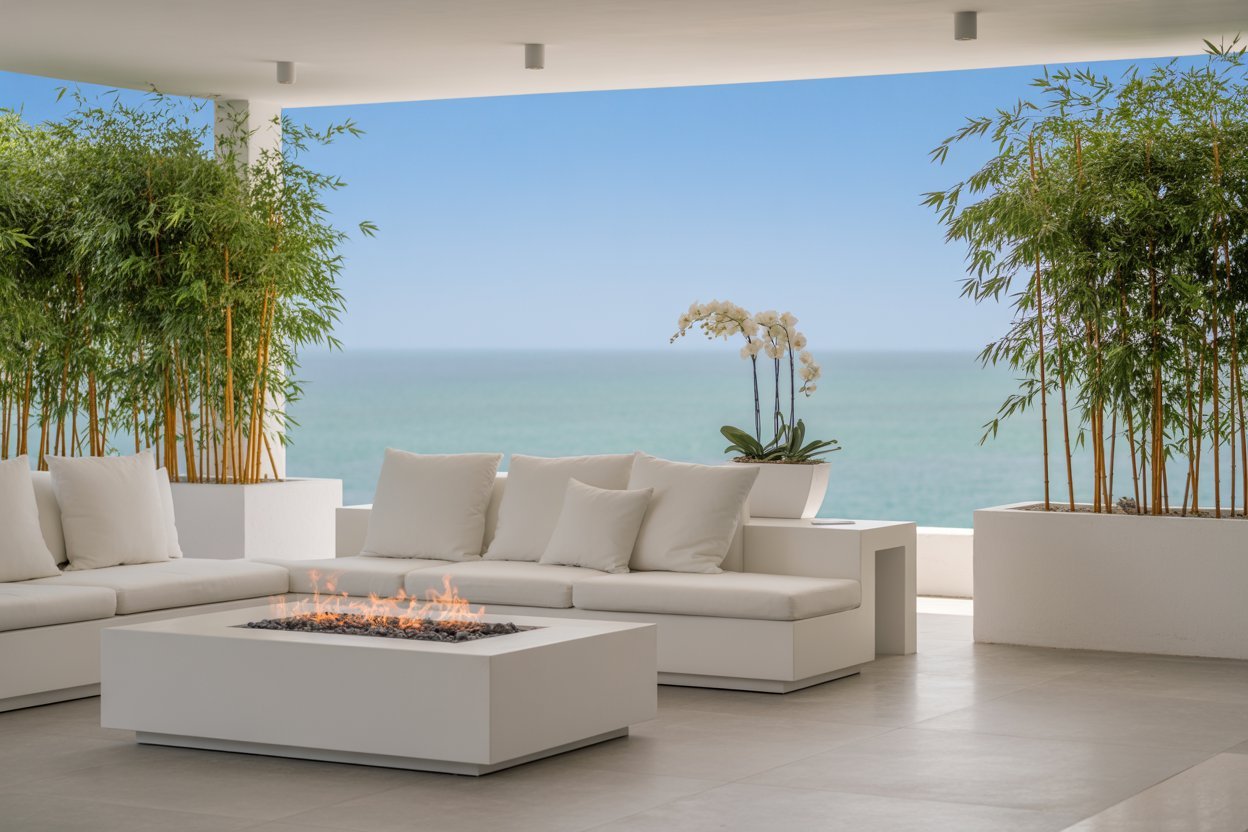
All-white patio color schemes dominated Instagram for their clean, minimalist appeal, but designers are warning that this sterile approach creates cold, unwelcoming outdoor spaces. Design professional Lisa Delane observes that monochromatic white patios often “feel cold and uninspired” rather than the sophisticated sanctuaries they’re meant to represent. The trend toward white outdoor furniture, white planters, and white accessories has created a hospital-like aesthetic that fights against the natural warmth and comfort that outdoor living should provide.
The Instagram appeal of all-white patios lies in their photogenic qualities and apparent sophistication, but these spaces often fail to deliver genuine comfort or livability. White surfaces show every speck of dirt, require constant cleaning, and can create harsh glare in bright sunlight that makes spaces uncomfortable for actual use. The monochromatic approach also ignores the psychological benefits of color in outdoor environments, where warmer tones and natural hues help create connections to nature and promote relaxation.
Professional designers emphasize that successful outdoor spaces should feel like natural extensions of indoor comfort rather than photo studios. This means incorporating layered textures, warm neutrals, and strategic pops of color that create inviting environments for real living rather than just social media content. The goal should be creating spaces that feel welcoming and comfortable for extended periods, not just moments long enough to capture the perfect Instagram shot.
13. The Oversized Plant Prison
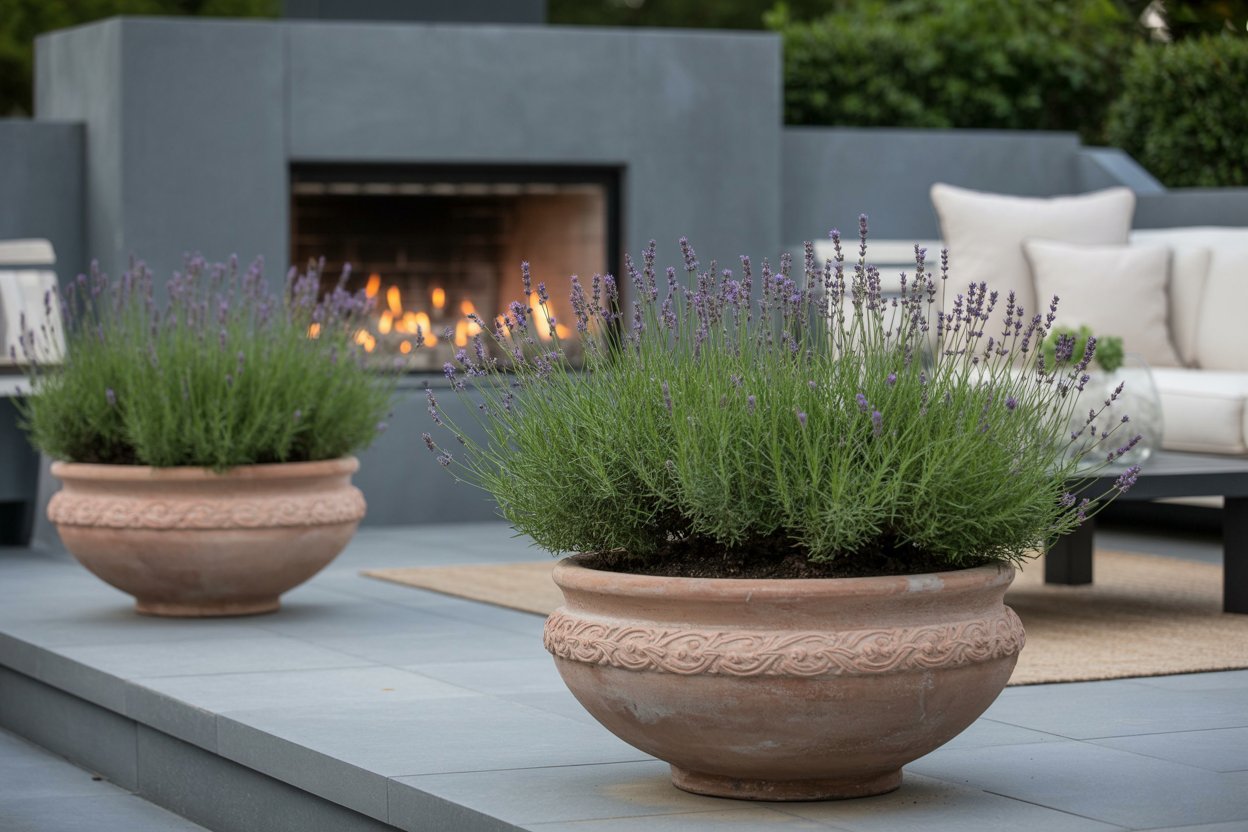
Giant planters became Instagram gold for their dramatic scale and ability to create instant focal points, but designers are questioning whether bigger is really better when it comes to outdoor containers. These oversized vessels often overwhelm patio spaces, creating awkward proportions that dominate areas meant for relaxation and entertainment. The trend toward massive planters reflects social media’s preference for bold, attention-grabbing elements over thoughtful design that serves actual outdoor living needs.
The practical challenges of oversized planters extend far beyond their visual impact. These containers require enormous amounts of soil, creating weight issues on decks and patios that may not be designed to support such loads. They’re also incredibly difficult to move, making seasonal plant changes or space reconfiguration nearly impossible. The substantial soil volume often leads to drainage problems that can kill plants or create standing water that attracts mosquitoes and other pests.
Design professionals advocate for appropriately scaled planters that integrate well with outdoor furniture and allow for flexible arrangements. Multiple medium-sized containers offer more versatility than single oversized pieces, enabling homeowners to create varied displays, easily move plants for optimal growing conditions, and reconfigure spaces for different activities. The goal should be creating harmonious outdoor environments rather than dramatic Instagram moments that compromise functionality and livability.
12. The Artificial Lawn Catastrophe
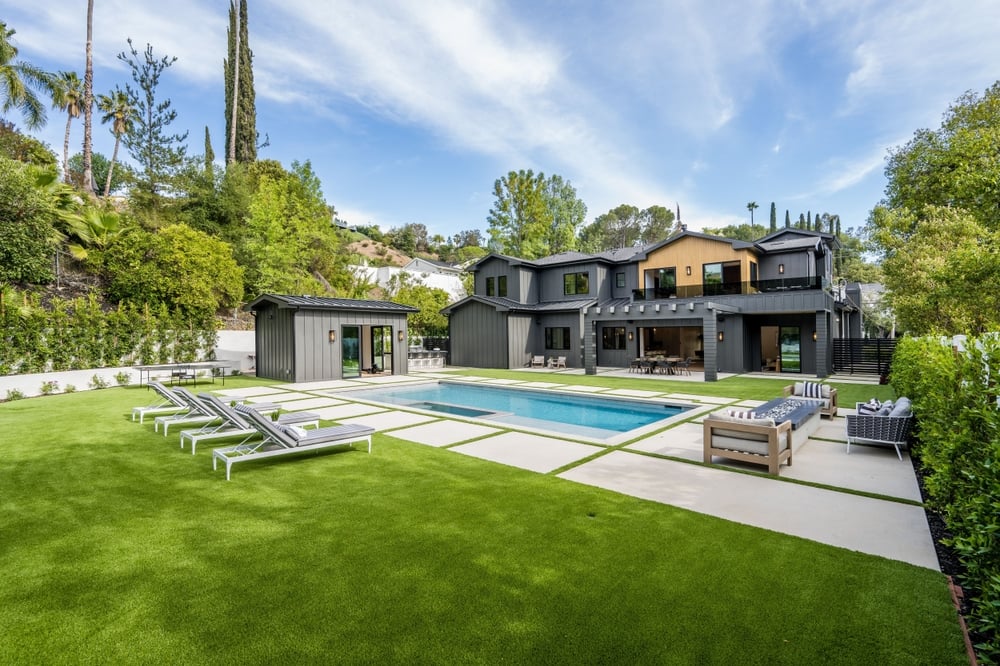
Synthetic grass surged on Instagram as a low-maintenance solution for perfect green spaces, but designers and environmental experts are highlighting the serious drawbacks of this artificial alternative. While fake grass promises to eliminate watering, mowing, and fertilizing, it creates new problems that often prove more troublesome than traditional lawn maintenance. The plastic surface becomes scorching hot in direct sunlight, making it uncomfortable and potentially dangerous for bare feet, pets, and children who want to enjoy outdoor spaces.
The environmental concerns surrounding artificial turf extend far beyond its obvious unnaturalness. These synthetic surfaces contribute to urban heat islands, don’t provide habitat for beneficial insects, and can leach chemicals into soil and groundwater. They also create drainage issues that can lead to flooding problems, as the impermeable surface prevents natural water infiltration. When artificial grass reaches the end of its lifespan, it becomes plastic waste that typically ends up in landfills rather than decomposing naturally.
Design professionals increasingly recommend native ground covers, permeable hardscaping, or regionally appropriate grass varieties that work with local climates rather than against them. These alternatives may require some maintenance, but they provide genuine environmental benefits, feel natural underfoot, and create outdoor spaces that connect inhabitants with natural systems rather than isolating them behind artificial barriers. The goal should be creating sustainable outdoor environments that enhance rather than degrade local ecosystems.
11. The Perfect Lawn Obsession
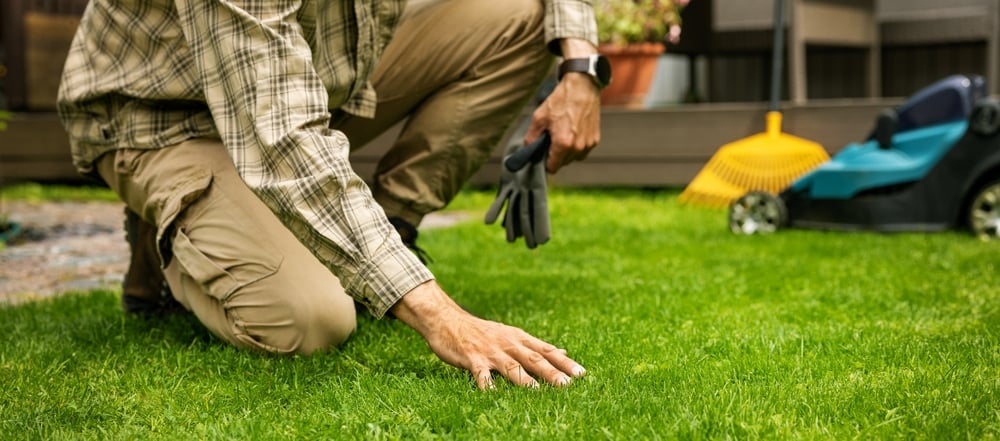
Instagram’s perfectly manicured lawn aesthetic became an unattainable standard that’s both environmentally problematic and financially demanding. These pristine green carpets require enormous amounts of water, fertilizer, and chemical treatments to maintain their social media-ready appearance, creating ongoing expenses and environmental impacts that many homeowners underestimate. The pursuit of golf-course perfection in residential settings often leads to frustration and significant ongoing costs that exceed the initial appeal of having an Instagram-worthy yard.
The environmental impact of maintaining perfect lawns extends far beyond water consumption to include fertilizer runoff that pollutes waterways and pesticide use that harms beneficial insects and wildlife. These chemical-dependent monocultures provide no habitat value and often create sterile environments that exclude the biodiversity that makes outdoor spaces interesting and ecologically valuable. The maintenance requirements also consume weekends and create ongoing stress rather than the relaxed outdoor living that patios are meant to provide.
Landscape professionals increasingly recommend reducing lawn areas in favor of native plantings, productive gardens, or alternative ground covers that require less maintenance and provide more environmental benefits. Even small reductions in lawn area can significantly decrease maintenance demands while creating opportunities for more interesting and functional outdoor spaces. The goal should be creating outdoor environments that enhance rather than dominate homeowners’ time and budgets while supporting local ecosystems.
10. The Wobbly Statement Seat

Freestanding hanging chairs promised to bring that Bali resort vibe to suburban backyards, but designers are done with this Instagram darling. Designer Adnan Anwar finds that “They look so awkward and are not that comfortable in most cases, and the metal stands are a total eyesore”. What appeared dreamy and romantic in carefully staged photos becomes a cumbersome eyesore that dominates patio space without delivering on comfort or functionality.
The practicality issues extend far beyond aesthetics. These chairs typically require significant floor space to accommodate both the seat and the stabilizing base, often consuming the area that could house a proper seating arrangement for multiple people. The swaying motion that seems so appealing in videos becomes tiresome during longer sitting sessions, and the chairs rarely integrate well with other furniture pieces, creating an awkward focal point that disrupts the flow of outdoor living spaces.
Perhaps most problematic is how these chairs photograph versus how they perform in daily use. While they create striking silhouettes for social media posts, they often go unused for actual relaxation because they’re either uncomfortable for extended periods or positioned awkwardly within the patio layout. Design professionals consistently recommend hammocks as a more practical alternative that delivers the same gentle motion without the visual bulk and space consumption of freestanding hanging chairs.
9. The Trendy Plant Prison
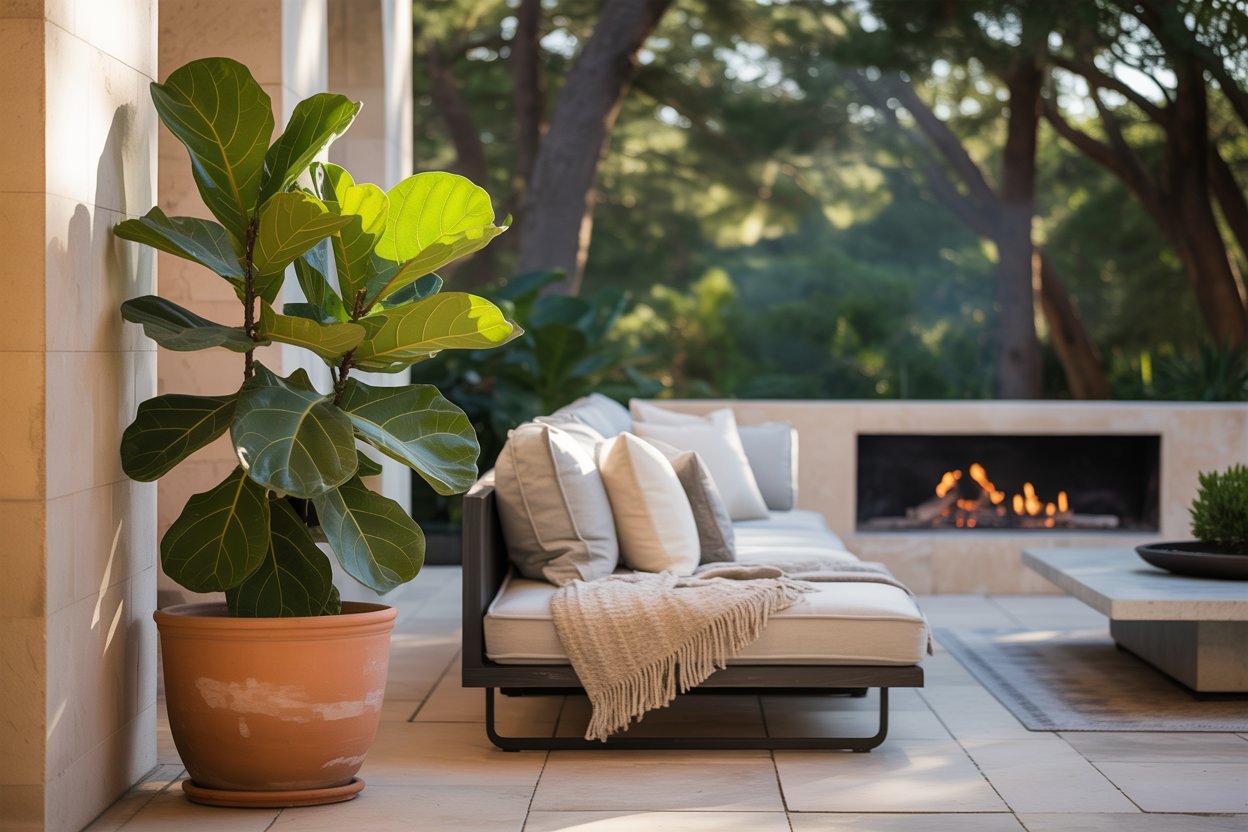
Fiddle leaf figs became the unofficial mascot of Instagram-worthy patios, but designers are calling time on this overused botanical star. Designer Callie Blanks notes that “Just like colors and furniture, plants follow trends too” and while she loves “a huge fiddle leaf,” relying on them as solo statement pieces can make outdoor spaces “fall a little flat when styled solo”. The problem isn’t the plant itself, but the monotonous way it’s been deployed across every patio seeking social media validation.
The Instagram obsession with fiddle leaf figs has created a cookie-cutter approach to patio plant styling that lacks creativity and biodiversity. These plants, while photogenic, require specific care conditions that many homeowners underestimate, leading to disappointing results when the glossy leaves start browning or dropping. Additionally, their substantial size and architectural form can overwhelm smaller patio spaces, creating an unbalanced composition that prioritizes photo opportunities over livable outdoor design.
The trend has also encouraged a single-specimen approach to patio planting that ignores the principles of good garden design. Professional landscapers emphasize the importance of layering different textures, heights, and seasonal interest, but the fiddle leaf fig’s Instagram fame has led many homeowners to treat it as a standalone solution. This results in patios that look sparse and one-dimensional, lacking the lush, varied plantings that create truly inviting outdoor environments throughout the growing season.
8. The Weather-Beaten Floor Show
Outdoor rugs exploded across Instagram feeds as an easy way to define spaces and add pattern to patios, but designers are growing tired of dealing with their maintenance demands. Designer Alicia Hassen finds that outdoor rugs can “end up being more work than it’s worth,” particularly when “Uncovered patios and terraces leave the rug exposed to moisture and will erode the materials overtime”. What promises to be a low-maintenance style upgrade often becomes a source of ongoing frustration and expense.
The appeal of outdoor rugs is obvious—they instantly add color, pattern, and defined zones to patio spaces. However, the reality of keeping them looking Instagram-ready proves challenging for most homeowners. Even rugs specifically designed for outdoor use struggle with constant exposure to UV rays, rain, and temperature fluctuations. They become magnets for debris, mildew, and staining, requiring far more upkeep than their carefree social media presentation suggests.
Professional designers increasingly recommend permanent solutions like decorative tile patterns or stained concrete instead of relying on textile floor coverings that need frequent replacement. These alternatives provide the same visual impact and space definition without the ongoing maintenance headaches. When outdoor rugs do work well, it’s typically in covered spaces with proper drainage and protection from the elements—conditions that don’t match the exposed patio settings where they’re most commonly featured on social media.
7. The Plastic Fantastic Furniture
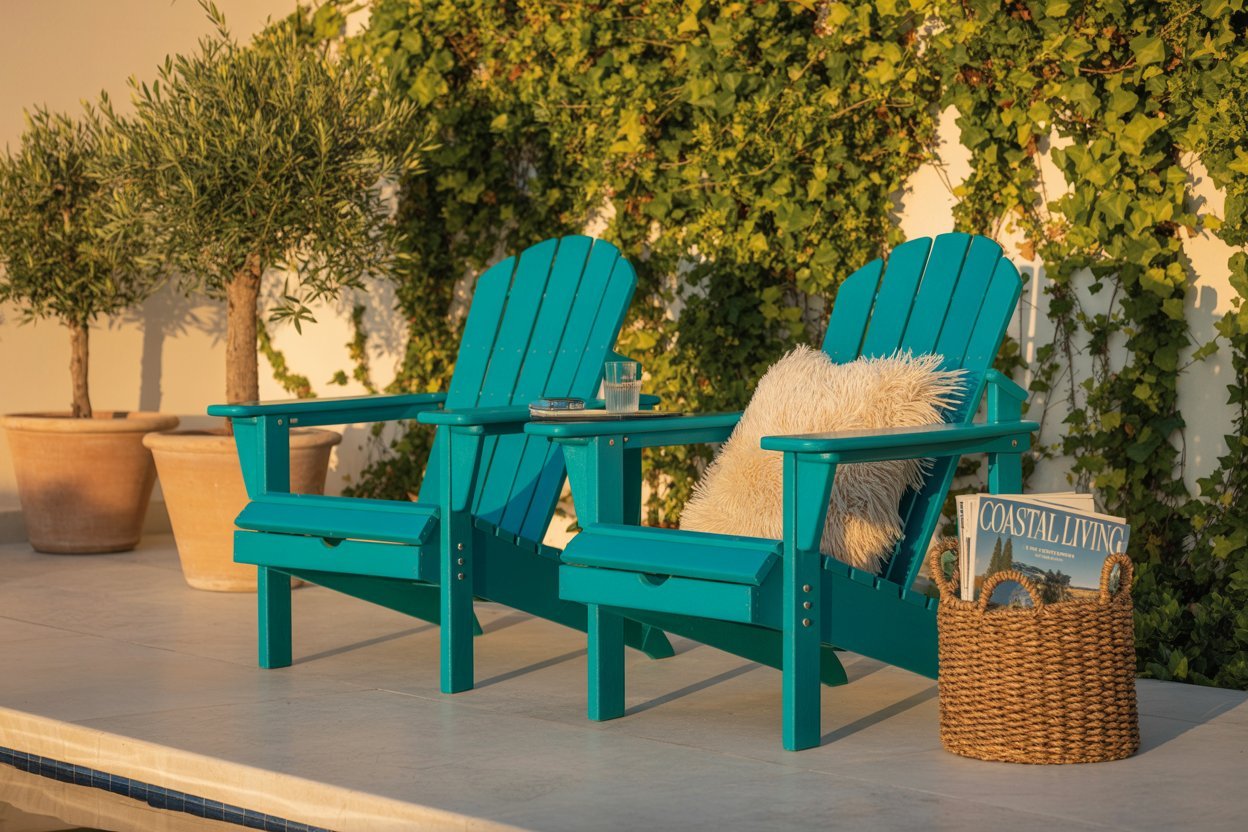
Weather-resistant furniture with an obvious synthetic appearance dominated budget-friendly patio makeovers on Instagram, but designers are calling for an upgrade to materials that don’t scream “cheap outdoor knockoff.” Designer Suzan Wemlinger advises saying goodbye to weather-resistant furniture “that has a plastic look” because “It tends to look cheap and more like an afterthought than an intentional design of the space”. The promise of durability and affordability has come at the cost of style and sophistication.
The proliferation of obviously synthetic materials in outdoor furniture reflects Instagram’s focus on immediate visual impact over long-term satisfaction. While these pieces often photograph well enough for social media posts, they fail to create the elevated outdoor living experience that homeowners actually want to enjoy day after day. The plastic appearance becomes more pronounced over time as these materials age less gracefully than natural alternatives, often becoming brittle, faded, or chalky in appearance.
Design professionals emphasize that outdoor furniture should feel like a natural extension of indoor spaces rather than a separate category with lower standards. This means investing in pieces that use high-quality materials and construction methods, even if they cost more initially. The goal is to create outdoor environments that feel intentional and sophisticated, not spaces that obviously compromise quality for weather resistance or budget constraints.
6. The Uniform Showroom Look
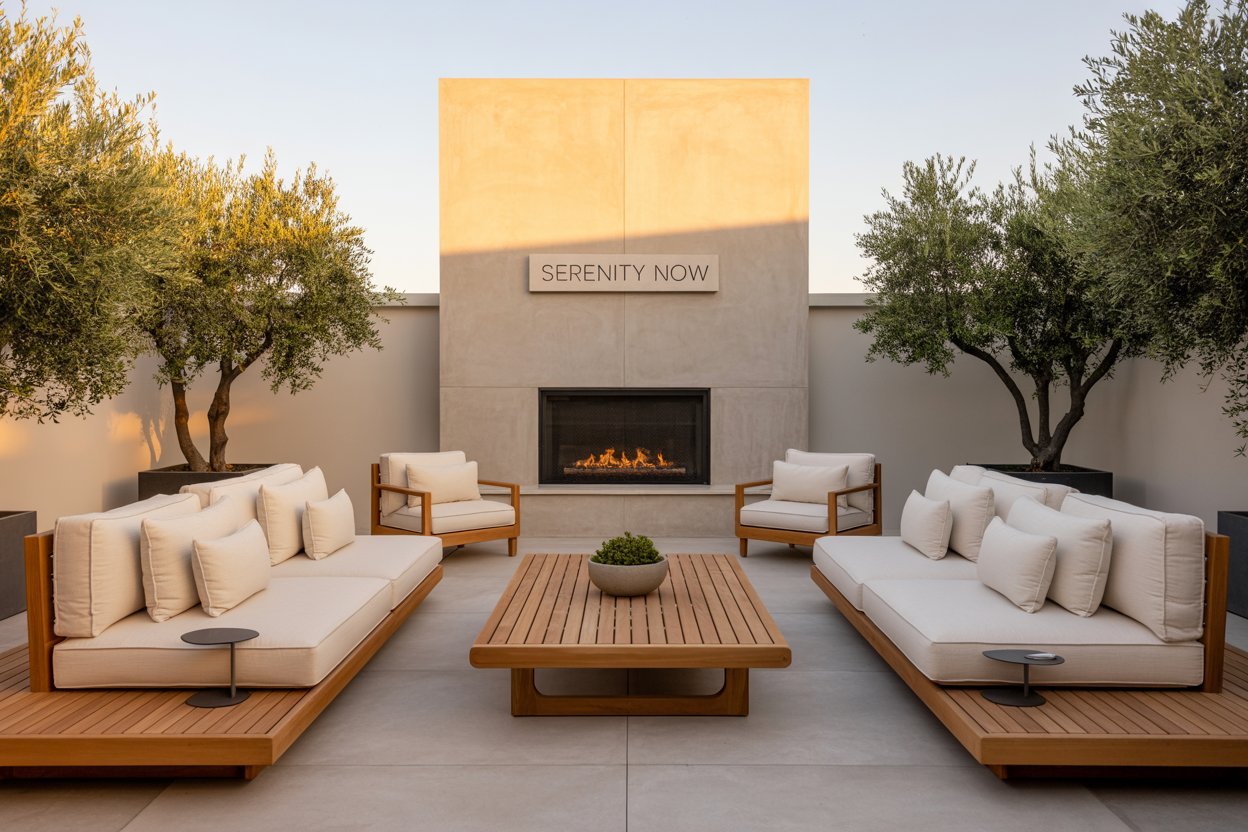
Matching furniture sets became Instagram gold for their clean, coordinated appearance, but designers are pushing for more thoughtful curation that reflects personal style. Designer Ellie Stein explains that matching sets “make a space feel flat and more like a showroom display than a carefully curated extension of your home”. The convenience of purchasing complete sets has created a homogeneous look across patios that prioritizes ease over personality and sophistication.
The problem with matching sets extends beyond their predictable appearance to their inflexibility in real-world use. These collections are typically designed to photograph well together but may not account for how people actually use outdoor spaces. A dining table and chairs that look perfect as a set might not integrate well with lounge seating or occasional tables that homeowners add over time, creating awkward juxtapositions that require constant rearrangement or additional purchases.
Professional designers advocate for a more collected approach that develops over time and reflects the homeowner’s lifestyle and preferences. Stein recommends “mixing materials and textures” by pairing “powder-coated metal chairs with a vintage teak table, or bring in a woven piece for softness” to “create a layered, collected look that feels intentional, but not too perfect”. This approach requires more effort but results in outdoor spaces with genuine character and functionality.
5. The Disposable Dining Charade
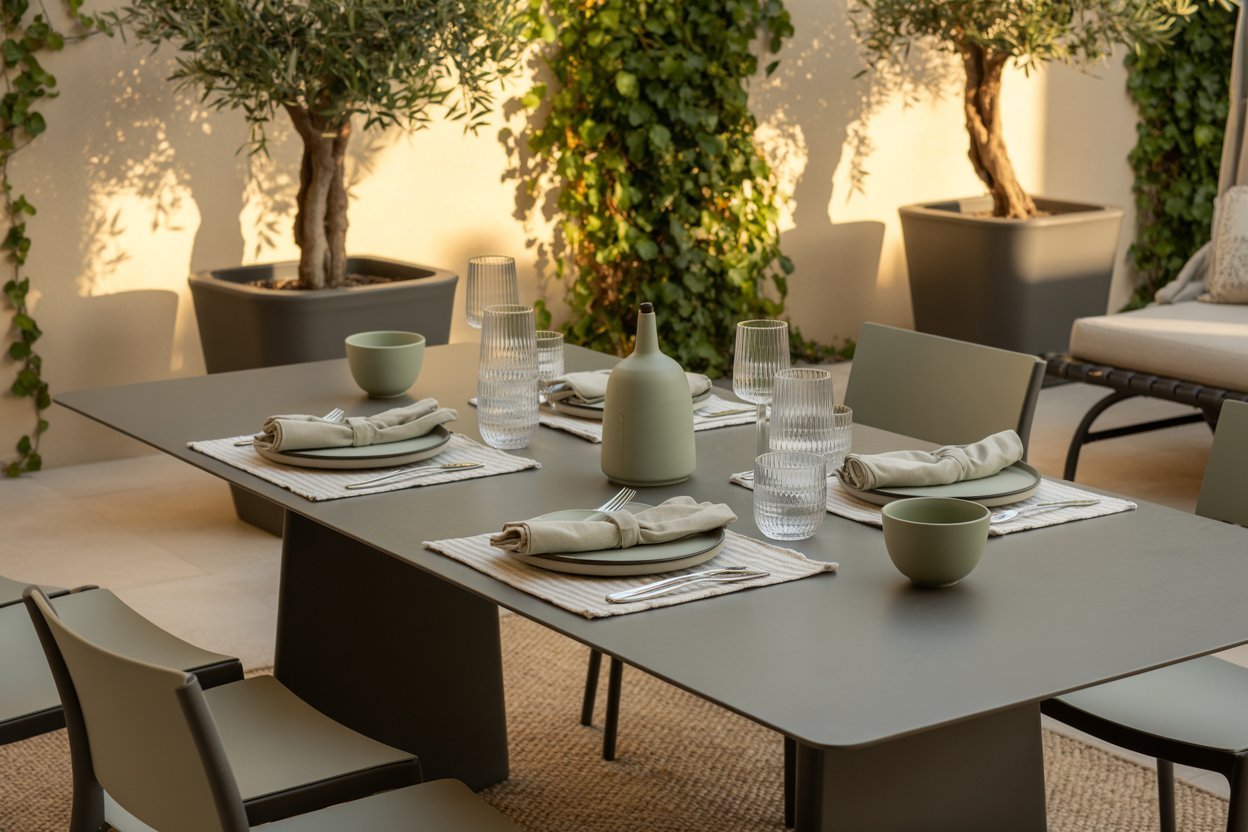
Melamine dinnerware sets gained Instagram popularity as a colorful, durable alternative to paper plates for outdoor entertaining, but designers question whether this compromise between indoor elegance and outdoor practicality hits the mark. Barrett Oswald explains that while “melamine plates are often nearly impossible to tell apart from ceramic plates,” sometimes “melamine too closely mirrors an indoor experience” when “you’re looking to make outdoor dining a unique-feeling affair”. The trend toward indoor-outdoor seamlessness may have gone too far in trying to replicate interior dining experiences exactly.
The melamine trend reflects Instagram’s emphasis on styled tablescapes that look polished and coordinated, but this approach often misses the unique pleasures of outdoor dining. While these plates photograph beautifully and offer practical benefits like shatter-resistance and easy cleanup, they can create dining experiences that feel like pale imitations of indoor meals rather than celebrations of outdoor living’s distinct pleasures and relaxed atmosphere.
Design professionals suggest that outdoor dining can embrace its own aesthetic rather than trying to perfectly replicate indoor experiences. This might mean incorporating natural materials, embracing imperfection, or choosing serving pieces that feel authentically suited to al fresco dining. The goal is to create memorable outdoor experiences that feel special for their own qualities, not because they successfully mimic indoor entertaining in a different setting.
4. The Tangled Light Web
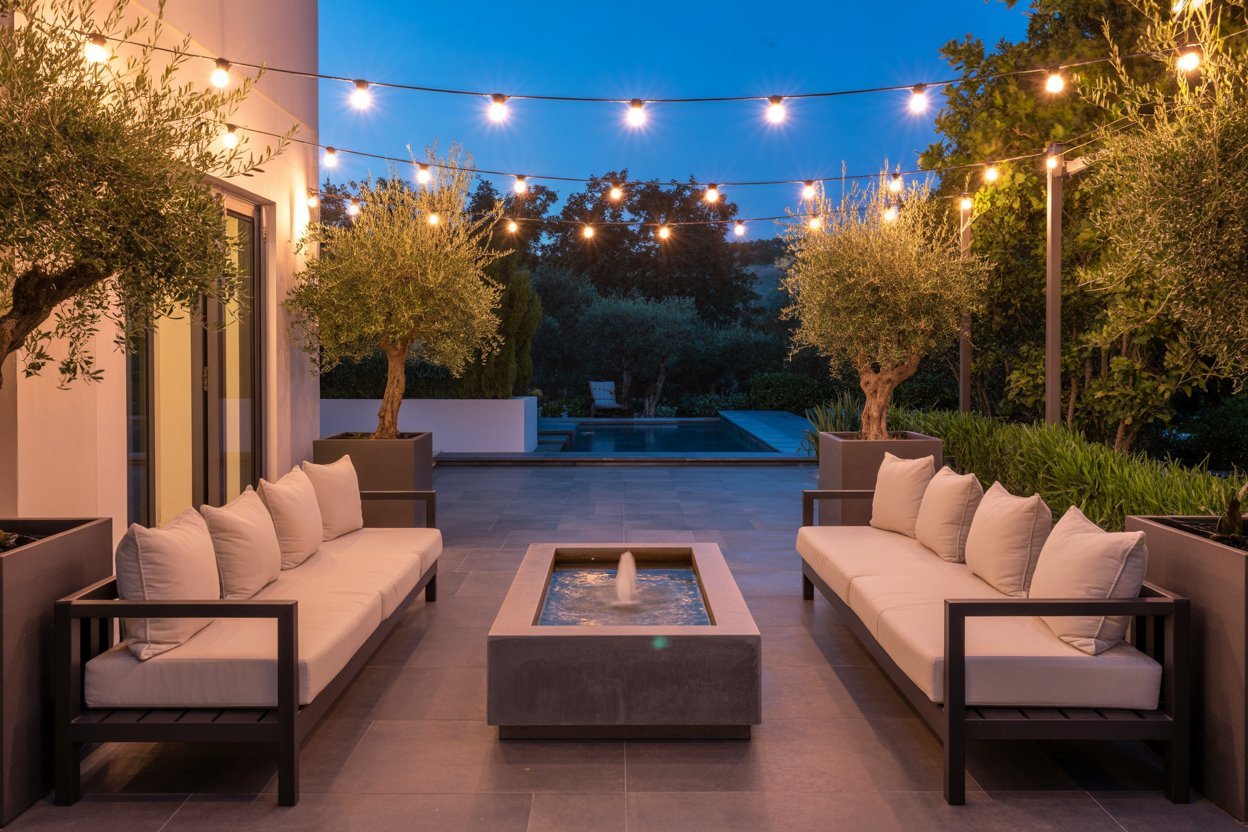
String lights became the go-to Instagram solution for creating ambient outdoor lighting, but designers are advocating for more thoughtful illumination strategies. Designer Lisa Delane warns that “haphazard placement or too many competing styles can make a space feel chaotic rather than cozy,” recommending instead “Thoughtfully placed lighting—like sculptural lanterns, discreet uplighting, or integrated sconces—[that] adds sophistication and makes your outdoor space feel intentional and inviting after dark”. The ease and affordability of string lights has led to their overuse in ways that create visual clutter rather than atmospheric enhancement.
The string light trend exemplifies Instagram’s preference for immediate, dramatic transformations that photograph well but may not serve long-term design goals. While these lights can certainly create magical effects when used skillfully, their ubiquity has led to installation approaches that prioritize quantity over quality, often resulting in tangled webs of lights that overwhelm rather than enhance outdoor spaces.
Professional lighting designers emphasize the importance of layered lighting that serves multiple functions—task lighting for activities, accent lighting for features, and ambient lighting for atmosphere. String lights alone rarely provide this comprehensive approach, and their overuse can actually detract from the architectural features and landscape elements that deserve highlighting. A more sophisticated approach integrates various lighting types to create depth and functionality that works for both everyday use and special occasions.
3. The Cold Gray Monotony
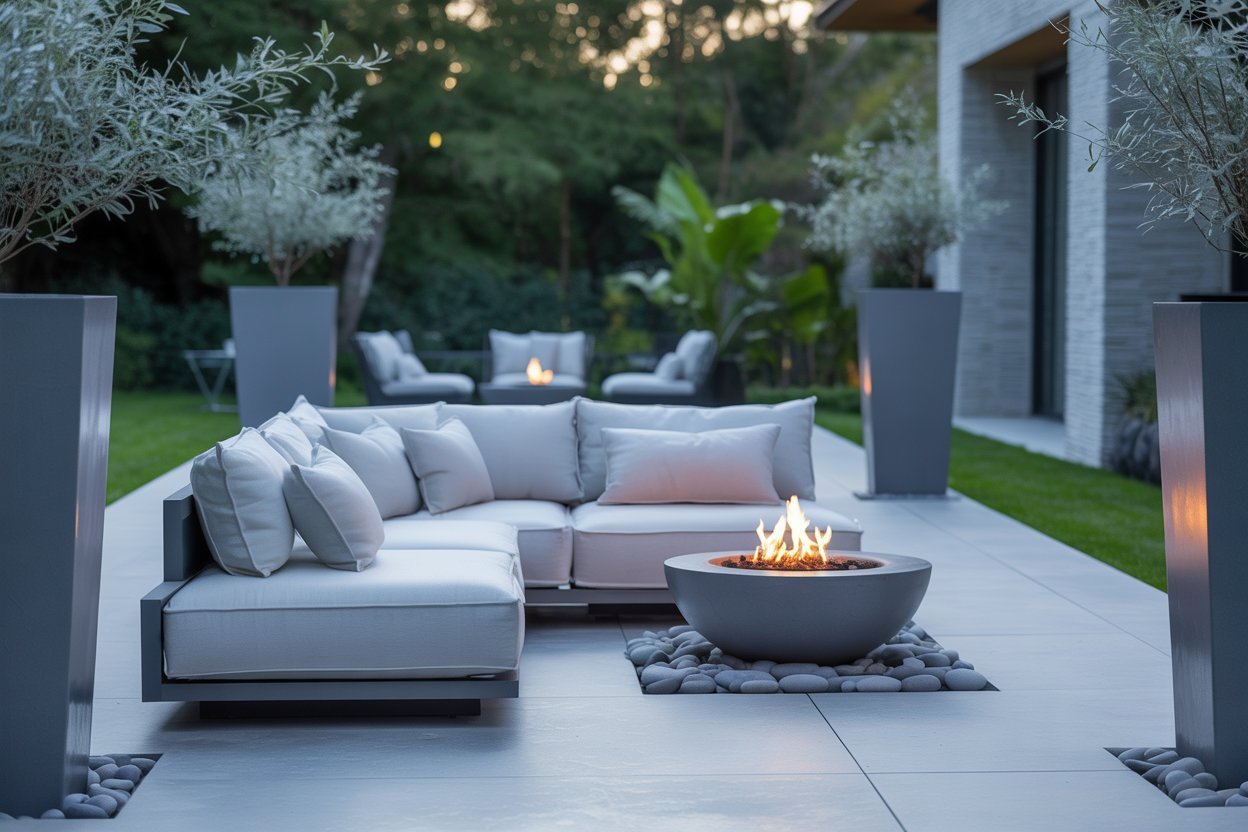
All-gray color schemes dominated Instagram patios for their clean, modern appearance, but designers are ready for this monochromatic moment to end. Designer Lisa Delane observes that “Gray-on-gray patios can feel cold and uninspired—2025 is the year to reintroduce depth, texture, and personality”, noting that “Neutral doesn’t have to mean flat—layered textures and warm hues bring back soul and style.” The safety of gray has created a sea of indistinguishable outdoor spaces that lack warmth and personality.
The gray trend gained Instagram traction because it photographs well and appears sophisticated, but living with exclusively gray palettes often proves less satisfying than anticipated. These monochromatic schemes can feel institutional or cold, especially in outdoor settings where people seek connection with nature and relaxation. The color’s popularity has also led to its overuse in outdoor furniture and accessories, making it difficult to create distinctive spaces that reflect individual taste.
Design professionals are encouraging homeowners to explore warmer neutrals and strategic color integration that creates more inviting outdoor environments. This doesn’t require abandoning neutral foundations but rather enhancing them with thoughtful color choices that add personality and warmth. The goal is to create outdoor spaces that feel welcoming and distinctive rather than following Instagram-driven formulas that result in spaces that could belong to anyone.
2. The Fragile Fire Feature
Small, decorative fire pits became Instagram stars for their photogenic flames and affordable price points, but designers are advocating for larger, more substantial installations. Designer Melanie Rekola suggests “thinking of the fire pit as the main event in your yard” and recommends forgoing “small fire pits in favor of something larger and more capable of creating a focal point”. The trend toward miniature fire features prioritizes social media aesthetics over functional outdoor living and genuine gathering spaces.
The appeal of small fire pits is obvious—they’re affordable, portable, and create dramatic effects for photographs. However, their practical limitations become apparent during actual use. These diminutive features often fail to provide meaningful warmth for gatherings, require constant fuel replenishment, and can appear insignificant within larger patio settings. Their small scale also limits seating arrangements and social interaction, defeating the primary purpose of fire features as gathering points.
Professional landscape designers emphasize that fire features should serve as anchors for outdoor living spaces, providing enough warmth and visual impact to draw people together and extend the outdoor season. This requires substantial installations that may cost more initially but deliver genuine utility and become true focal points. The investment in proper scale and quality pays dividends in creating outdoor spaces that function as well as they photograph, supporting real outdoor living rather than just social media moments.
1. The Cheap Wicker Deception

Low-quality synthetic wicker furniture exploded on Instagram as an affordable way to achieve resort-style looks, but designers are calling out the false economy of these obviously artificial materials. Designer Lisa Delane critiques “low-quality PVC versions that scream ‘plastic'” because they “take away from the luxurious feel of an outdoor space,” recommending instead “high-end HDPE wicker or a mix of materials like teak and rope for a more refined, resort-inspired aesthetic”. The race to achieve expensive looks on smaller budgets has resulted in furniture that appears decent in photos but fails to deliver on quality or longevity.
The synthetic wicker trend represents Instagram culture’s emphasis on appearance over substance, creating outdoor spaces that look good from a distance but disappoint upon closer inspection. These materials often lack the texture, weight, and visual authenticity of quality alternatives, creating furniture that feels hollow and insubstantial. Over time, low-quality synthetic wicker typically fades, becomes brittle, or develops an increasingly plastic appearance that undermines the natural, relaxed aesthetic it was meant to provide.
Design professionals emphasize that outdoor furniture represents a significant investment that should prioritize quality construction and materials that age gracefully. While high-quality alternatives cost more initially, they provide better comfort, durability, and visual appeal throughout their lifespan. The goal should be creating outdoor spaces that feel substantial and inviting for daily use, not just pieces that photograph well for social media content but disappoint in person and deteriorate quickly with exposure to the elements.
References
- 9 Outdoor Design Trends You Might Regret for 2024, According to Designers – Apartment Therapy
- 5 Outdoor Design Trends You Should Avoid in 2024, Designers Say – The Spruce
- 7 Outdated Outdoor Trends Designers Don’t Want to See in 2025 – The Spruce
- 8 Patio and Porch Trends for 2024, According to Designers – The Spruce
- We Tested the Best Outdoor Dinnerware Sets for Every Open-Air Occasion – The Spruce Eats
- 7 Ways to Hang Patio String Lights for a Magical Outdoor Space – Martha Stewart

